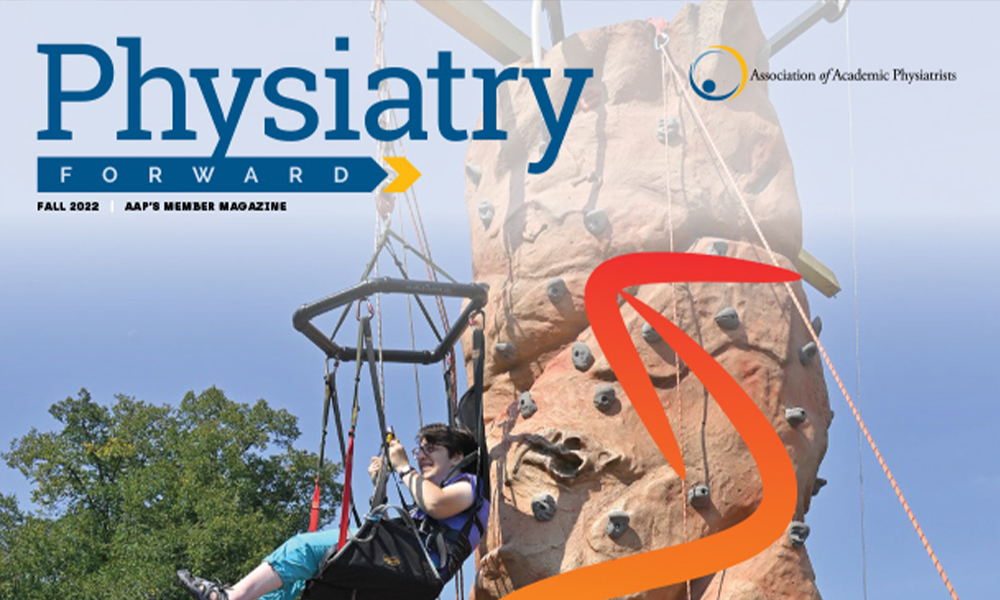
There is no place like Ranken Jordan Pediatric Bridge Hospital! We practice a revolutionary model of healthcare called Care Beyond the Bedside®, focused on getting patients up and out of their beds to engage in playful therapy.
OZ (Optimization Zone) is a play-based learning program for our patients ages 0-5. This in-house preschool aims to reduce the adverse developmental impacts that accompany long-term hospitalization. It is the next evolution of Care Beyond the Bedside®. OZ serves patients ages 0-5, about half of Ranken Jordan’s inpatient population. More than 120 patients have participated in OZ since the program launched. It provides Ranken Jordan’s youngest patients the opportunity to have structured social play and development stimulation.
Help us provide for this innovative and excellent program by joining our OZ fundraising goal!
Fundraising Tracker
$2,000,000 Goal
OZ in Action

Jack
4-year-old Jack has never lived at home. He fought for his life for two years at an acute care hospital. He came to Ranken Jordan on a ventilator, not being able to sit up and developmentally behind. After two years in OZ, Jack has many milestones to count. He is off the ventilator, communicating with an assistive communication device and walking with a walker! His favorite OZ activity is music!
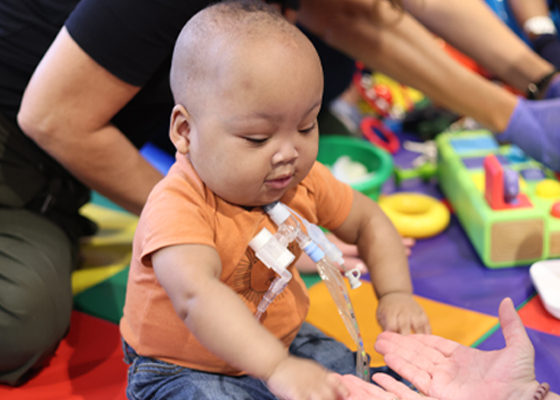
Jace
Jace was born premature at 26 weeks with severe bilateral pulmonary disease. He came to Ranken Jordan after a year in the NICU with no windows and no roommates. At Ranken Jordan Jace and his mom Rejae are often seen taking walks on the playground. They attend OZ together where Jace has begun sitting up on his own. He loves to flip pages of books and has started standing with the support of a stander.
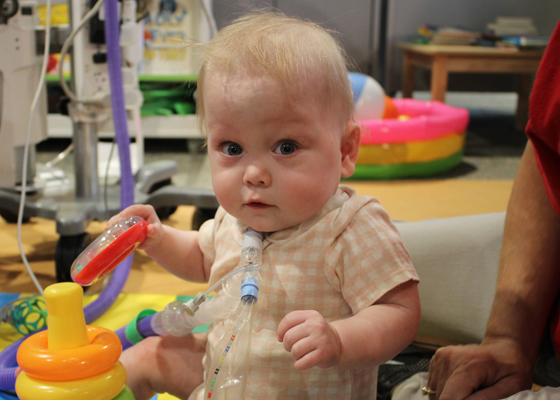
Iris
Iris spent the first nine months of her life on a ventilator in a bed in the NICU. She had a tracheostomy and came to Ranken Jordan to continue her healing process and learn to move around. Iris loves being around other children in OZ. She watched other children with trachs moving around OZ and a week later she began moving around as well!
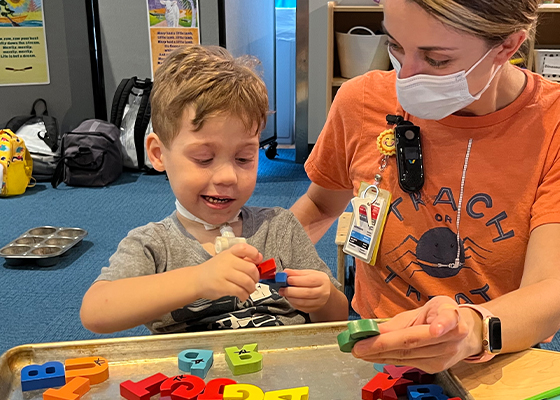
Teddy
You may recognize Teddy from the video. He is now a proud OZ graduate, has returned home and is attending school! He loves his teachers and they know what Teddy is capable of and do not place limits on his abilities. OZ prepared him for school and laid the foundation for his development as he continues to soar.
Teddy and Lisa
Lives Impacted by OZ
What is OZ?
 Studies have shown that children with prolonged hospitalizations return home dramatically behind in developmental activities and mobility. The team at Ranken Jordan asked how can we safely do more for these children? The answer was OZ.
Studies have shown that children with prolonged hospitalizations return home dramatically behind in developmental activities and mobility. The team at Ranken Jordan asked how can we safely do more for these children? The answer was OZ.
In May 2021, Ranken Jordan conducted a time-motion study, observing patients in the 0-5 age group. The study showed that these patients were out of bed and out of their rooms more than acute care hospitals, but at just under two hours a day, it was not as much as we wanted. To improve their development outcomes and their social interactions our patients needed more time out of their beds, socializing with others. The idea for a space for kids to interact and explore began to take shape and the Optimization Zone was the result.
A year later, in May 2022, after the implementation of the OZ program, the study showed a significant improvement, with patients in this age group now spending about three hours a day out of bed, marking an 84% improvement.
The OZ Team
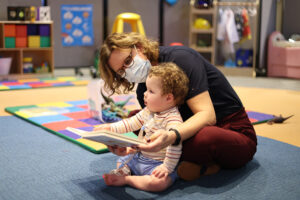 OZ began as a team effort with our staff psychologist taking the lead. Existing staff volunteered to spend part of their shift helping in OZ. As the programming began a few things quickly became evident.
OZ began as a team effort with our staff psychologist taking the lead. Existing staff volunteered to spend part of their shift helping in OZ. As the programming began a few things quickly became evident.
- Patients needed one-on-one care from an adult provider to keep patients safely participating in programming.
- Patients benefitted from having dedicated staff members for OZ
- Patients wanted more OZ time! They were constantly signaling to their nurses if it was time for OZ, time to play!
Two years into OZ, an early-learning preschool environment has developed. There is a dedicated OZ staff team led by an early childhood education professional. The team also includes a child life specialist, respiratory therapist, physical therapist, occupational therapist, and speech therapist.
OZ Effect: Initial Goals
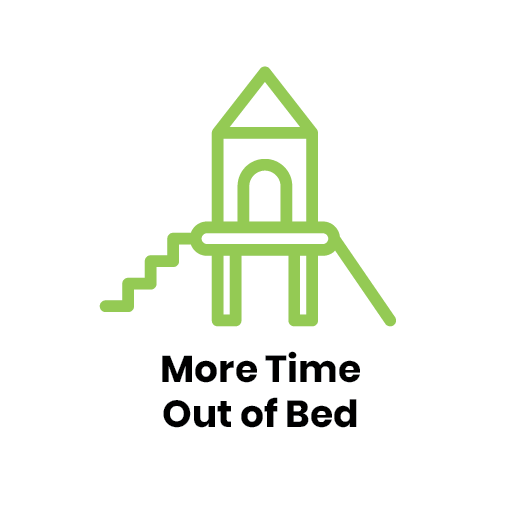
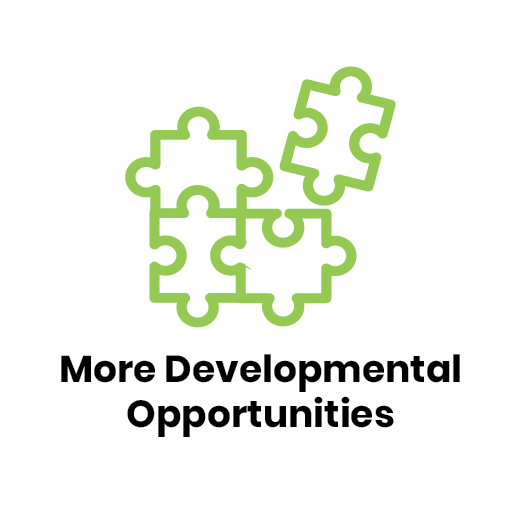
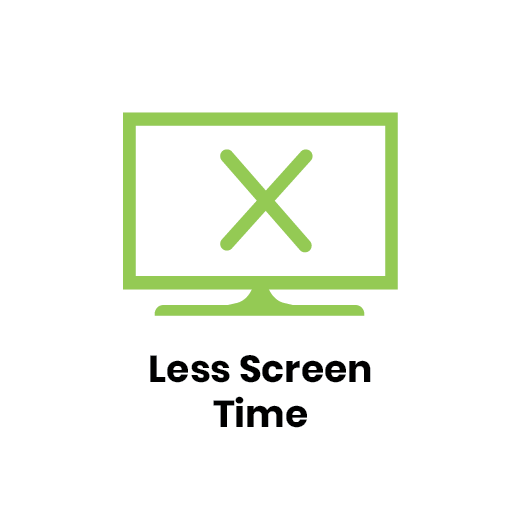


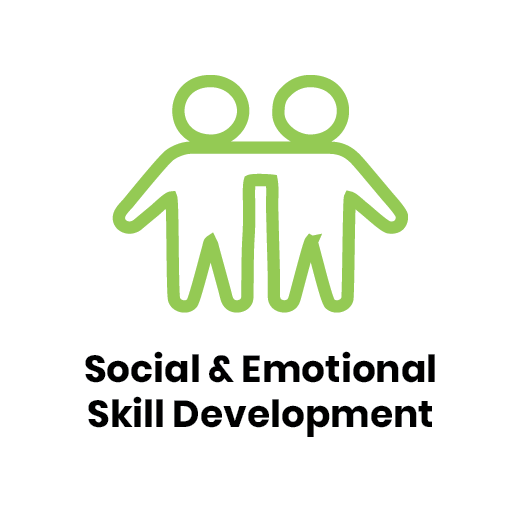
OZ has had a tremendous positive impact on our inpatient under the age of five. Two years after the launch of OZ, positive results are evident. The effects of OZ have reached beyond the initial goals. Staff have reported improvement in social skills, communication skills, emotional development, and patients’ sleep, not to mention, expedited progress in meeting physical therapy goals, improvement in chronic respiratory conditions, and much more. Patients’ families also report positive impacts as OZ provides caregivers with the opportunity to play with their children and become comfortable helping them engage in typical childhood development activities.
These goals were the guiding principles for the creation of OZ. We wanted to prevent the delays
and disabilities that occur in patients due to long-term hospitalization.
OZ Continues to Grow and Develop
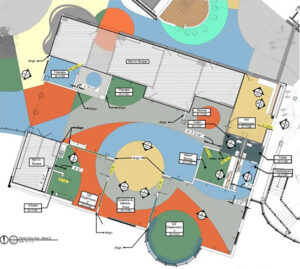 OZ is getting a new permanent home! OZ currently lives as a temporary space made out of room dividers in the south therapy gym. This has provided a temporary solution as the program has developed, but it is time to create a permanent home. We are excited to announce construction will begin in spring of 2024 on new dedicated space for OZ! This space will include two separate OZ classrooms and an area dedicated to science and nature exploration. Features include a special zone for babies to safely crawl and explore, outlets in the floor to accommodate medical equipment, and specialized seating options.
OZ is getting a new permanent home! OZ currently lives as a temporary space made out of room dividers in the south therapy gym. This has provided a temporary solution as the program has developed, but it is time to create a permanent home. We are excited to announce construction will begin in spring of 2024 on new dedicated space for OZ! This space will include two separate OZ classrooms and an area dedicated to science and nature exploration. Features include a special zone for babies to safely crawl and explore, outlets in the floor to accommodate medical equipment, and specialized seating options.
OZ has proved so popular with our young patients that the need for safe space for them to move around and interact with each other outside of “OZ time” is evident. Construction will also take place this spring on smaller OZ-inspired play spaces located on the west care unit.
Improved Development Assessment Tools
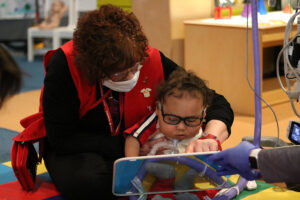 The OZ Team has been examining options to find a tool that can best measure our patients’ development gains. One struggle with traditional tools is that they often begin with age-based assessments. Due to their long hospitalizations, our patients often begin months behind, and adapting the tool is overly complicated. The team has studied many evaluation tools and is excited to have found an education partner that is working with them on adapting the HELP (Hawaii Early Learning Profile) tool. This tool will not only help the OZ team demonstrate a patient’s development, it provides a recognizable framework for other educators that caregivers can provide to their children’s schools when they leave Ranken Jordan.
The OZ Team has been examining options to find a tool that can best measure our patients’ development gains. One struggle with traditional tools is that they often begin with age-based assessments. Due to their long hospitalizations, our patients often begin months behind, and adapting the tool is overly complicated. The team has studied many evaluation tools and is excited to have found an education partner that is working with them on adapting the HELP (Hawaii Early Learning Profile) tool. This tool will not only help the OZ team demonstrate a patient’s development, it provides a recognizable framework for other educators that caregivers can provide to their children’s schools when they leave Ranken Jordan.






